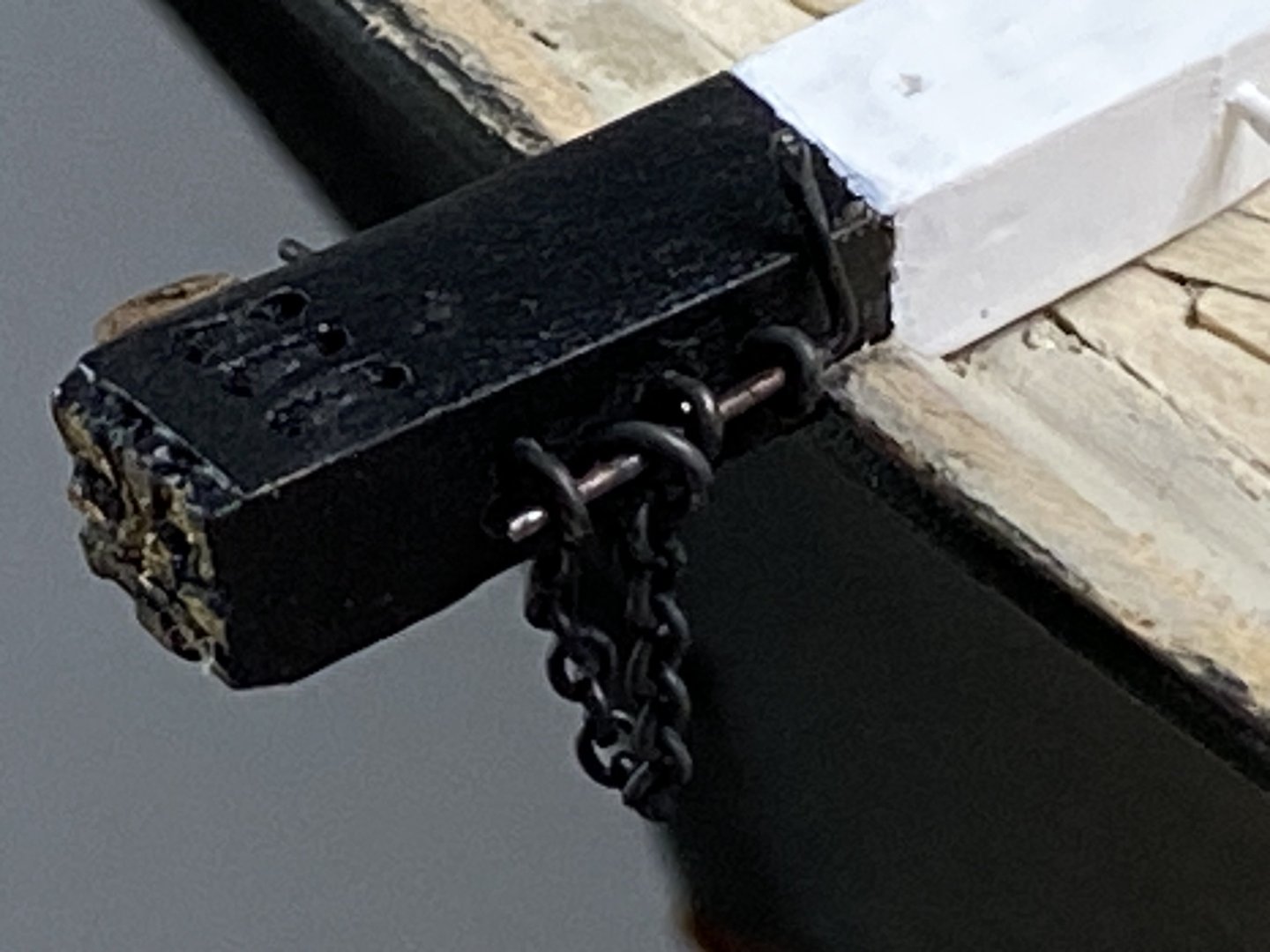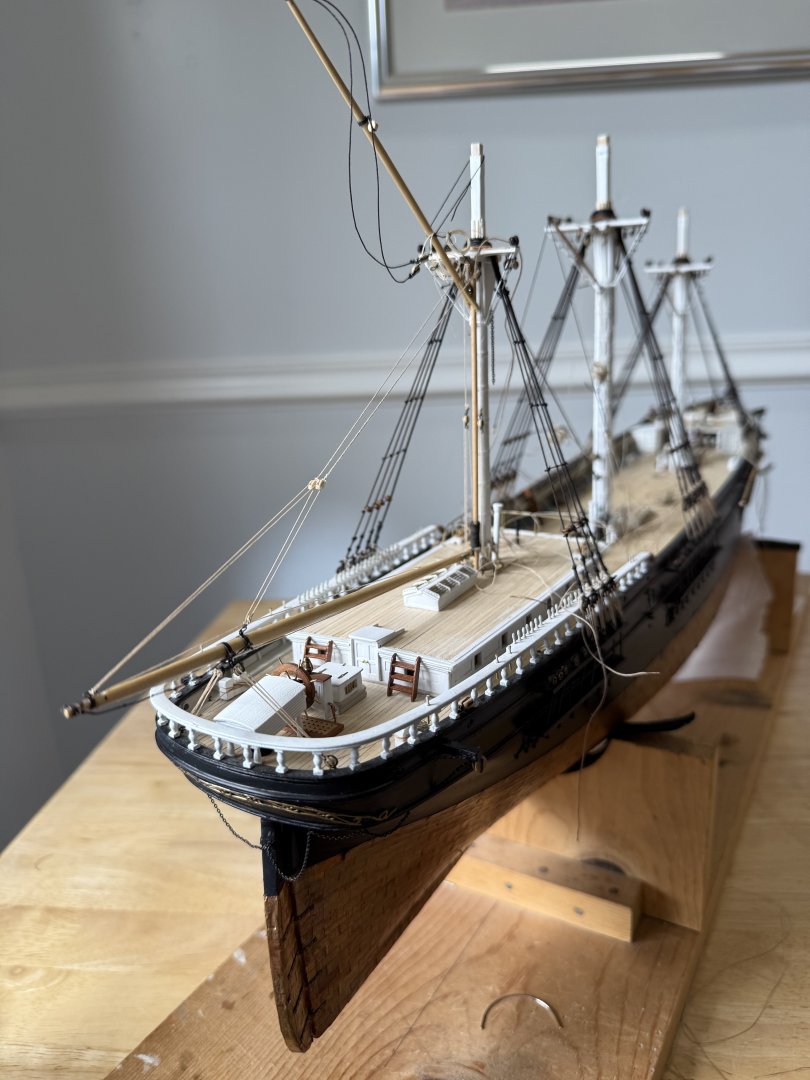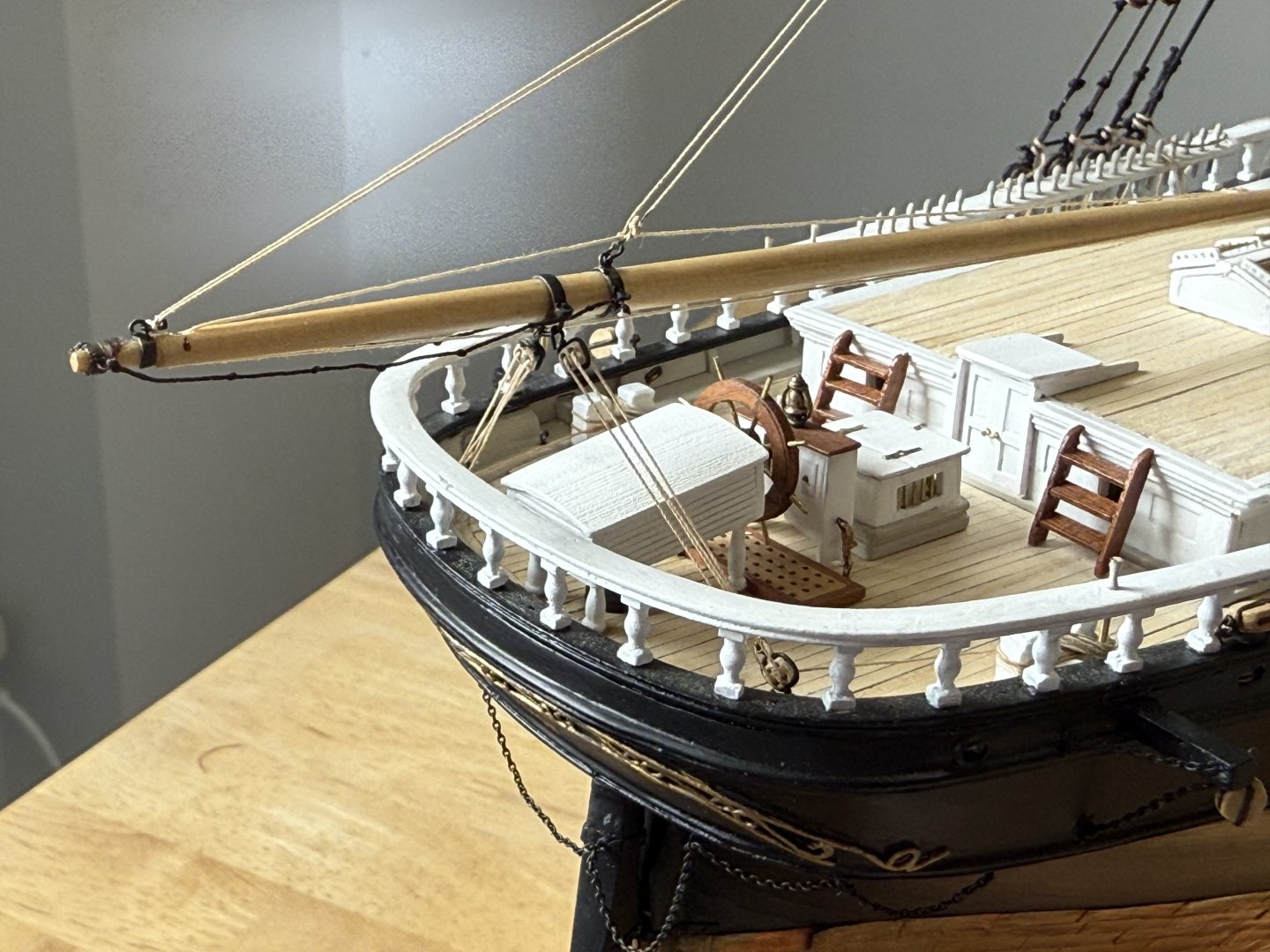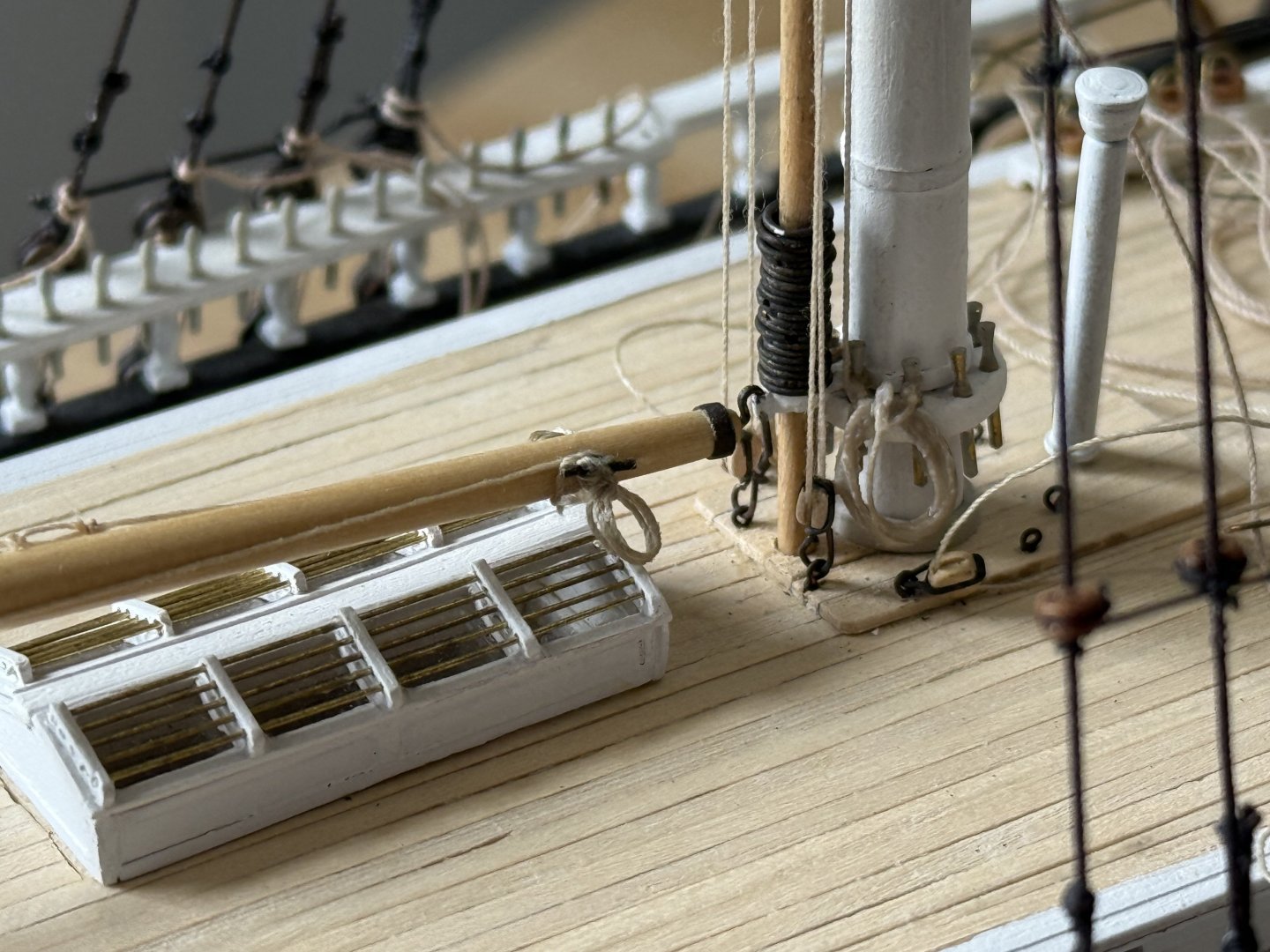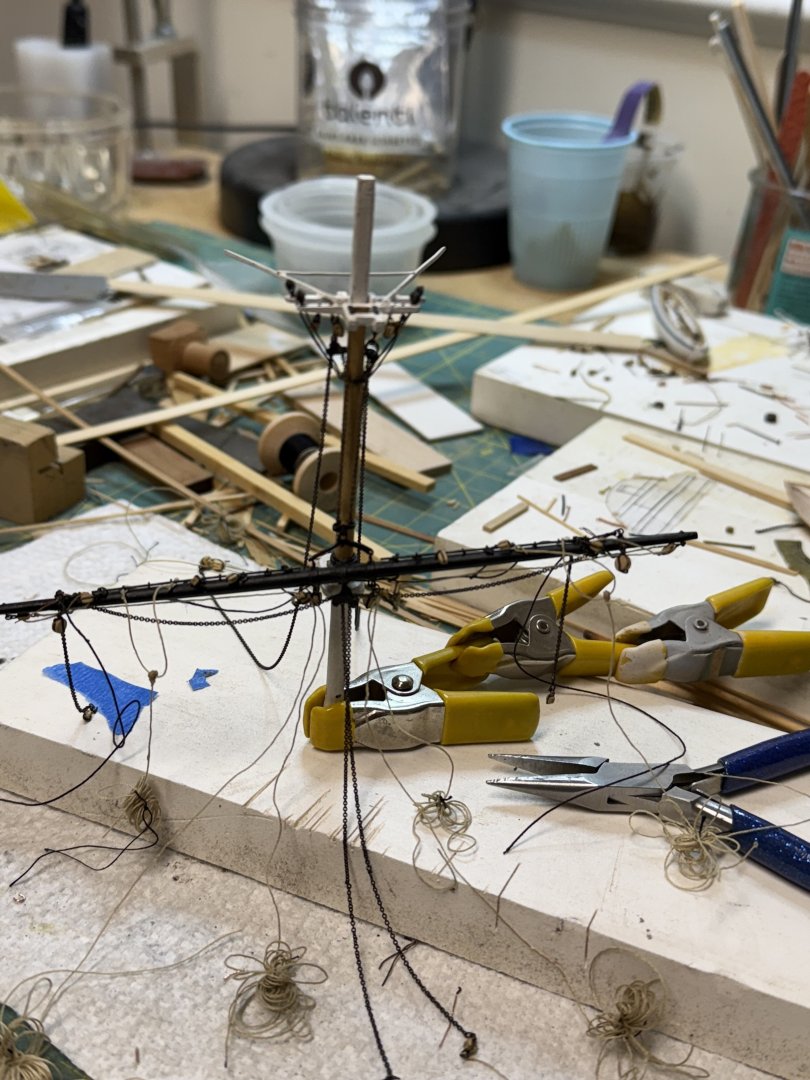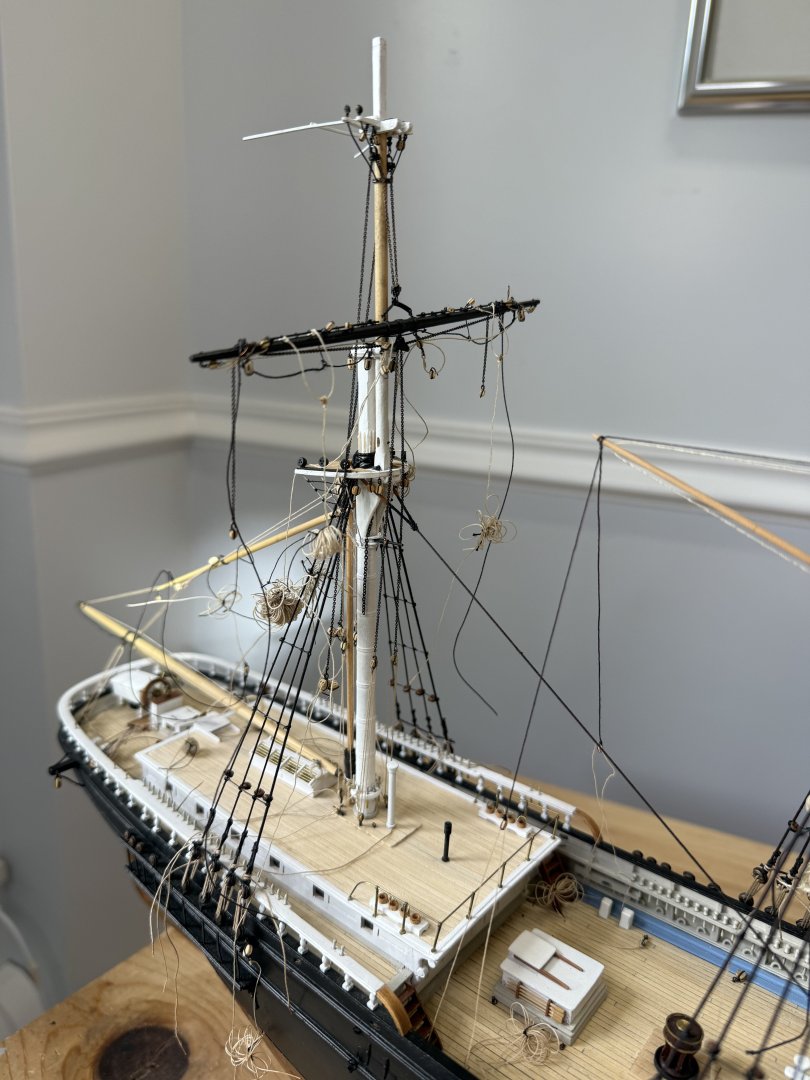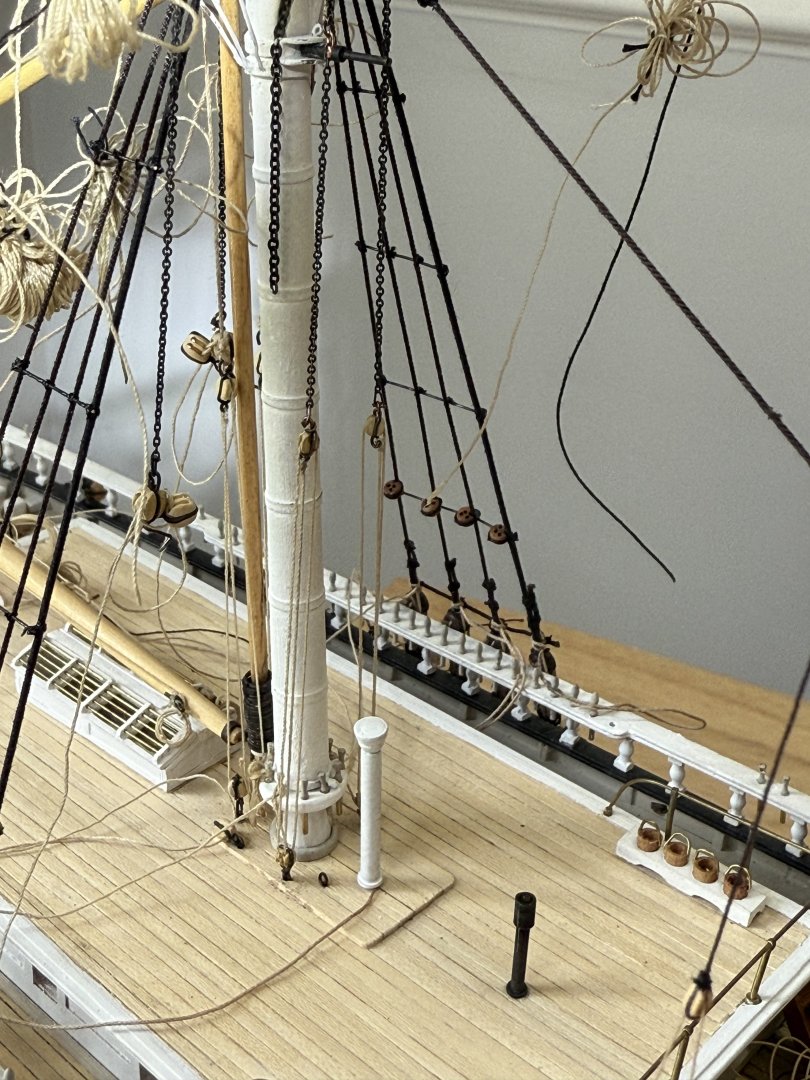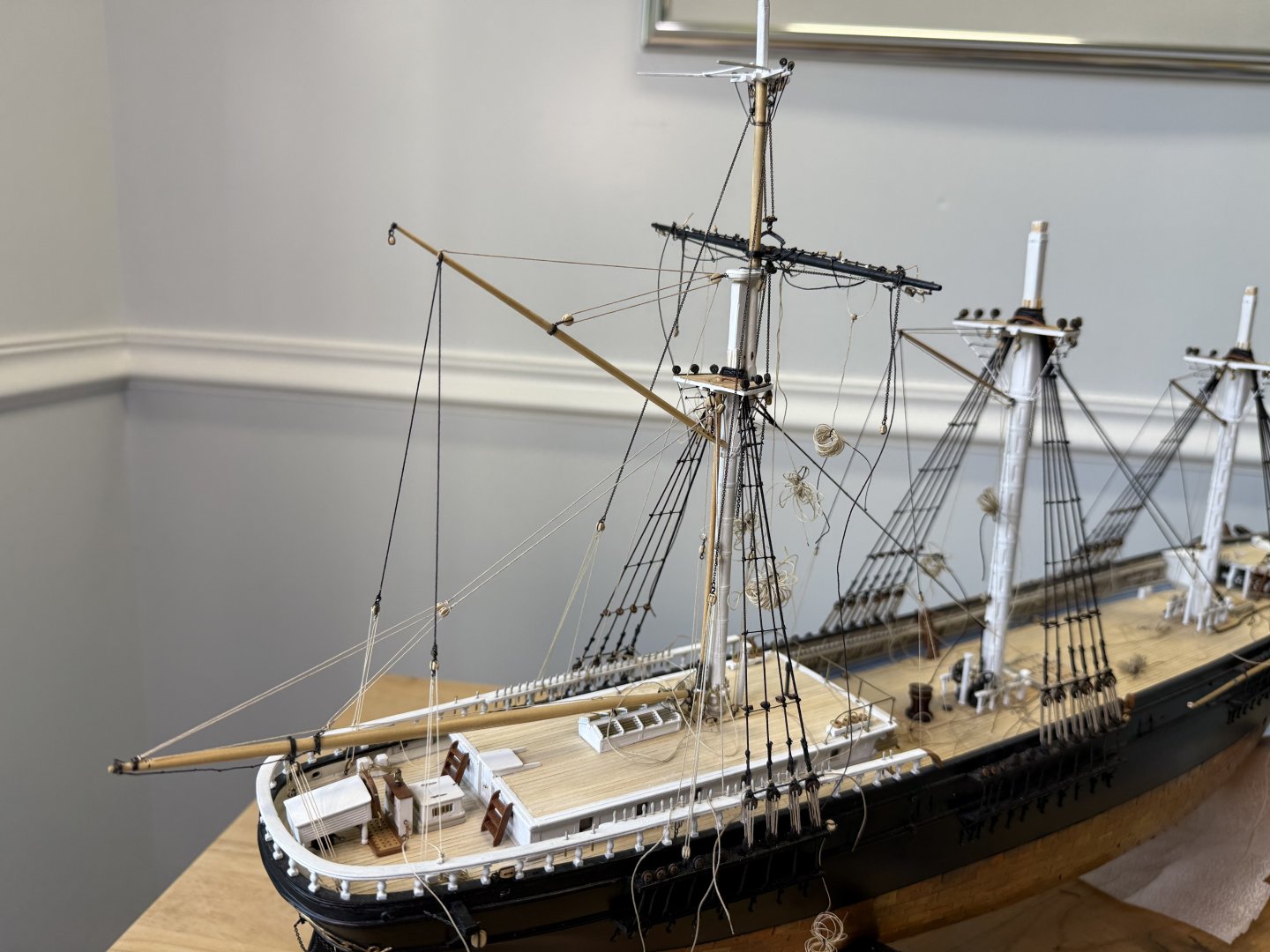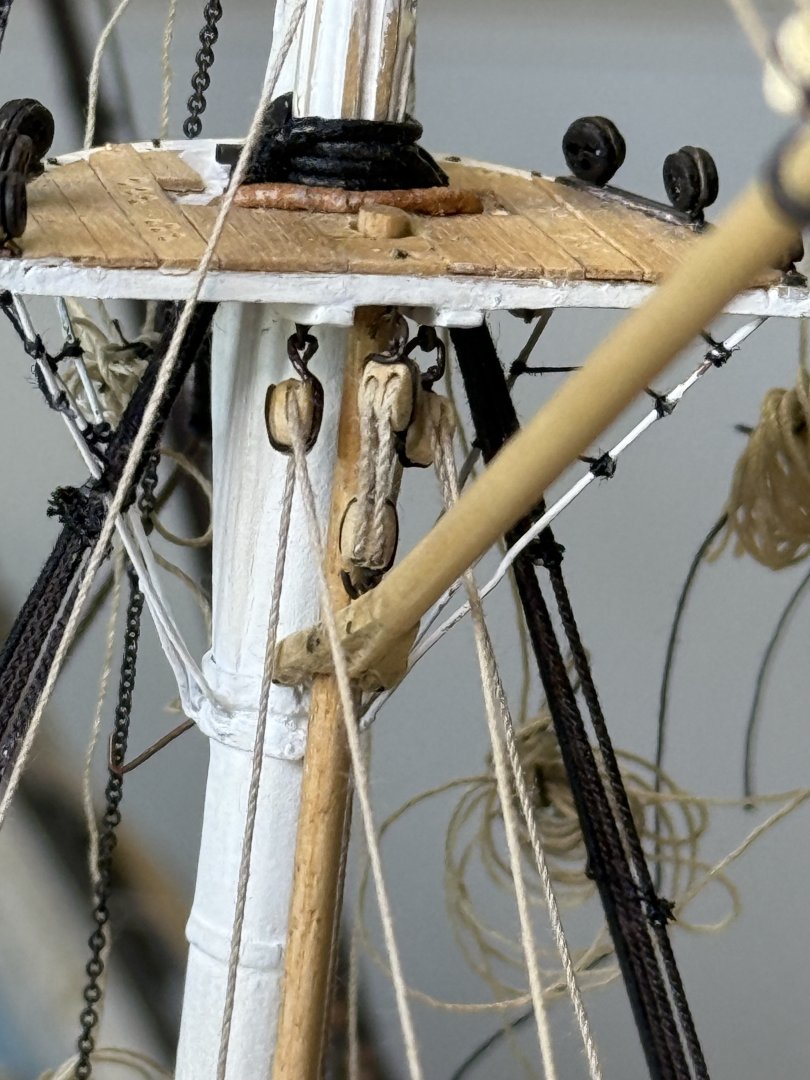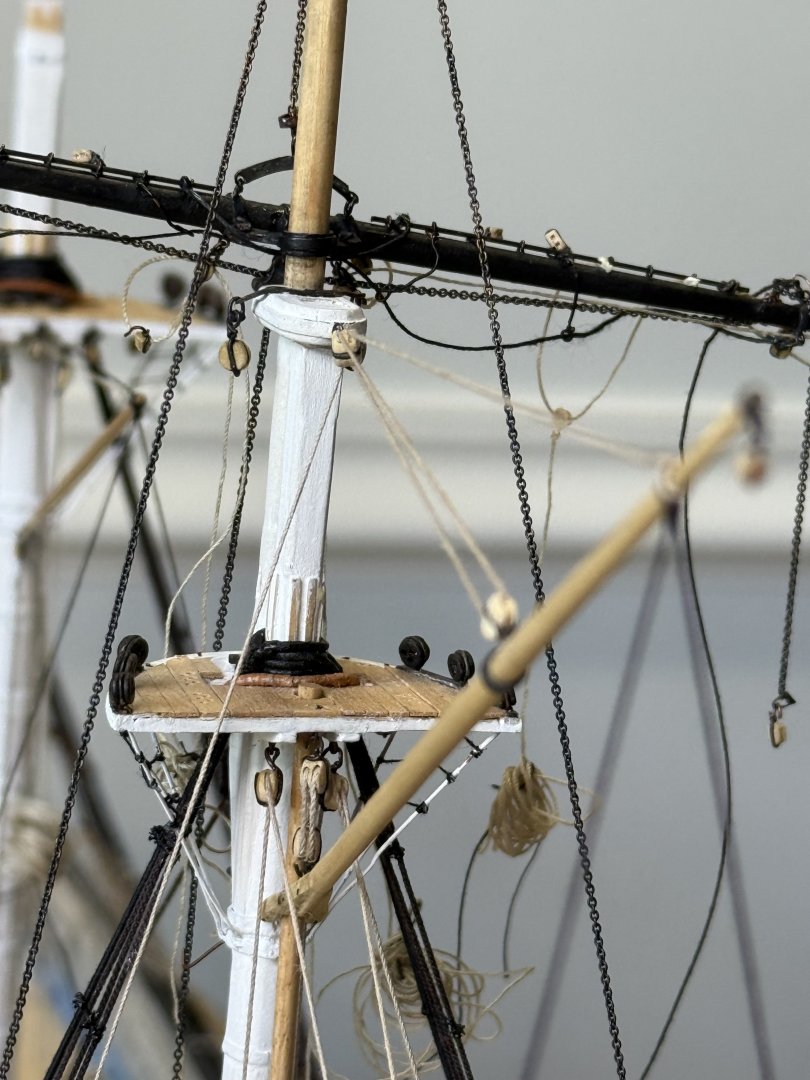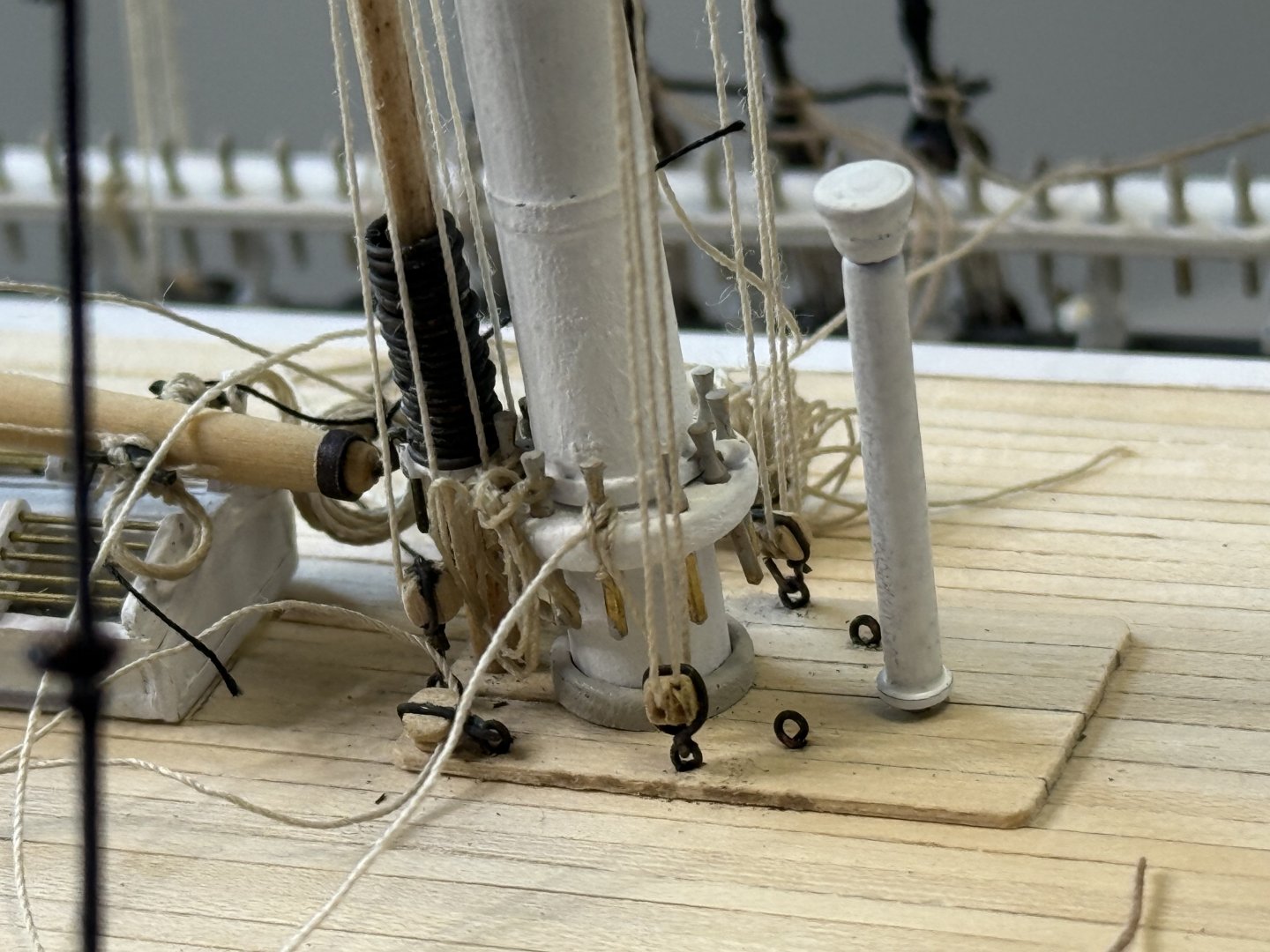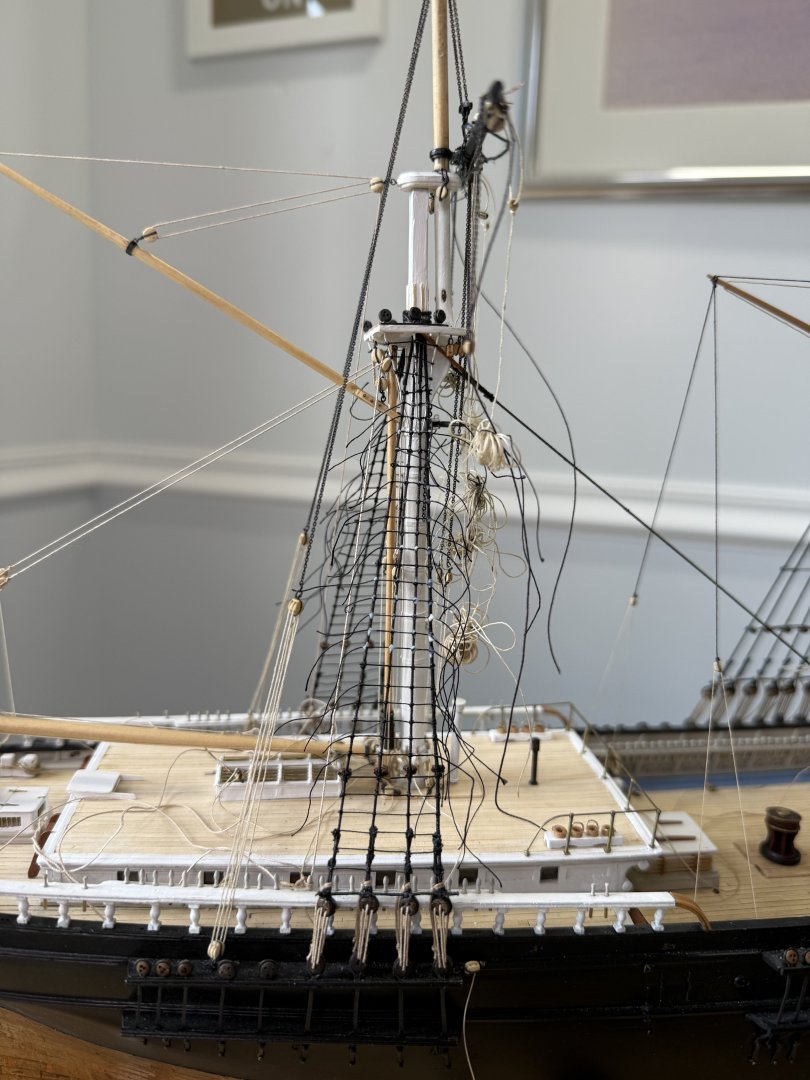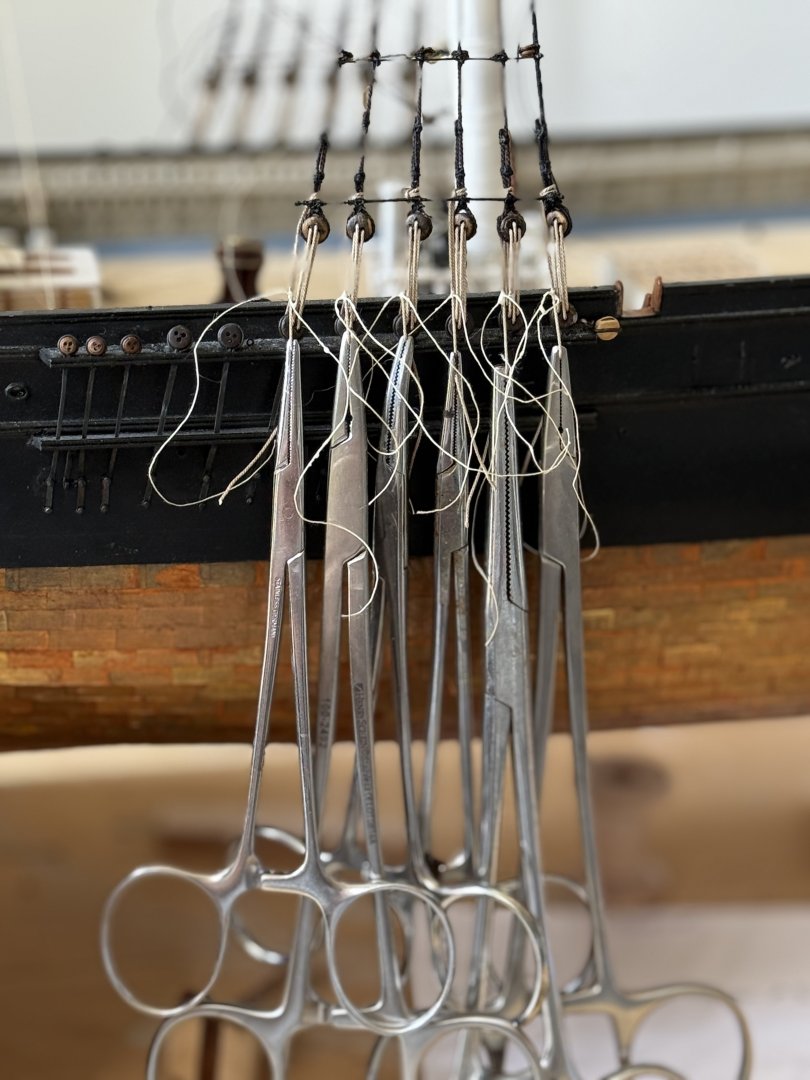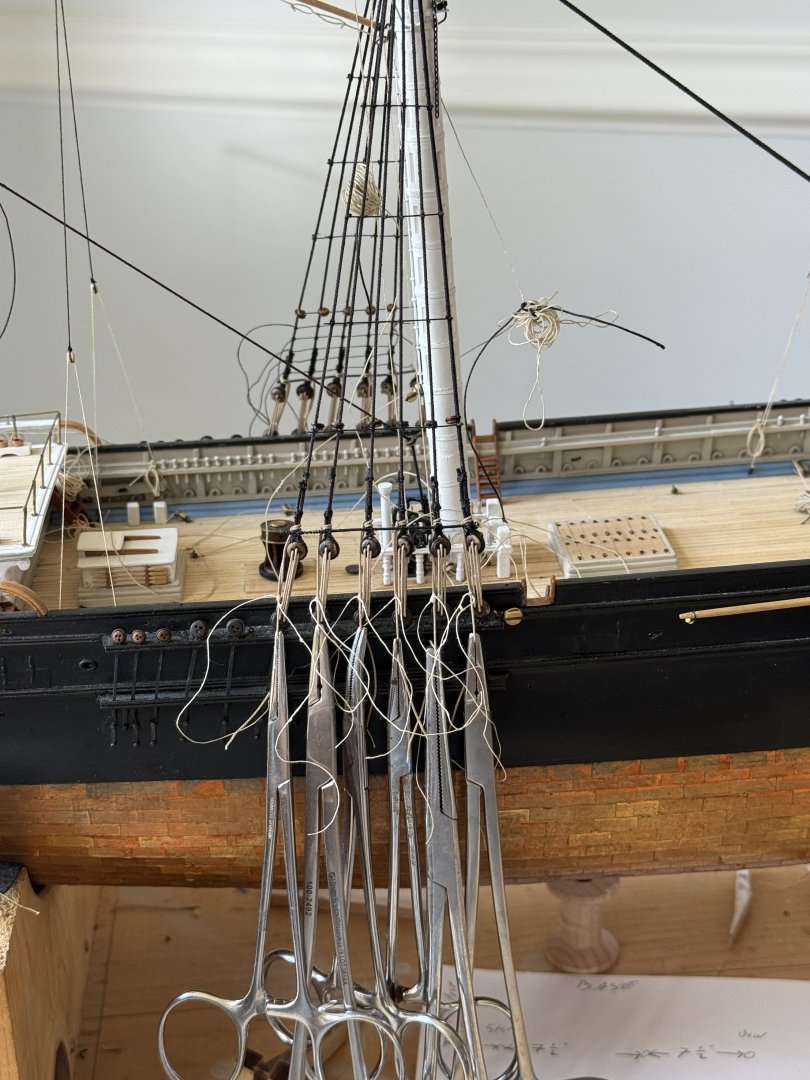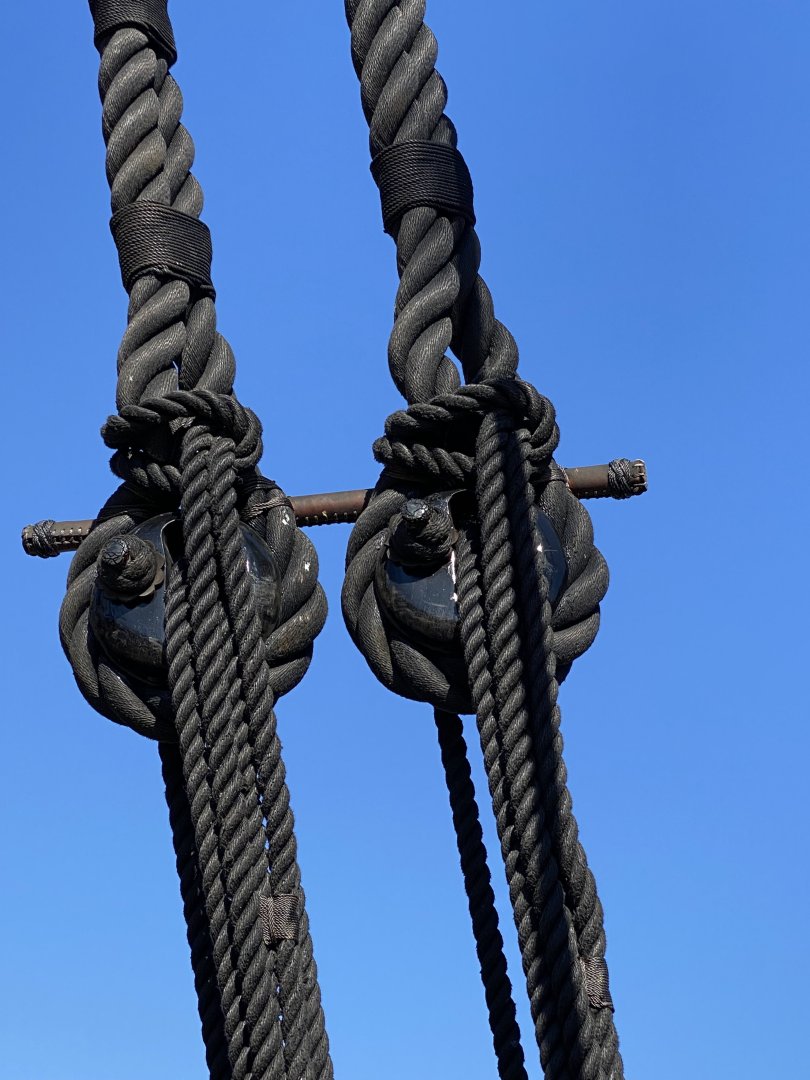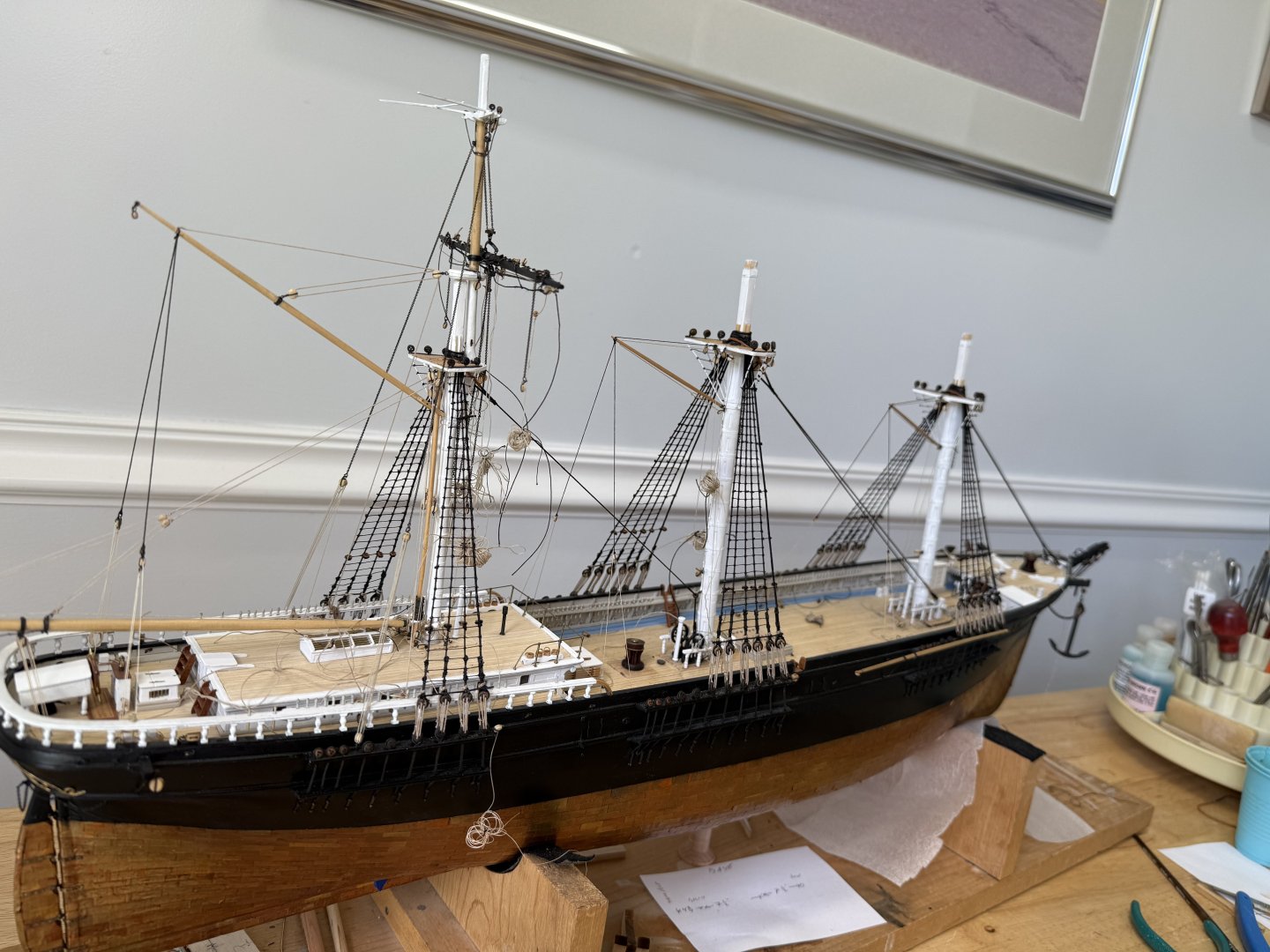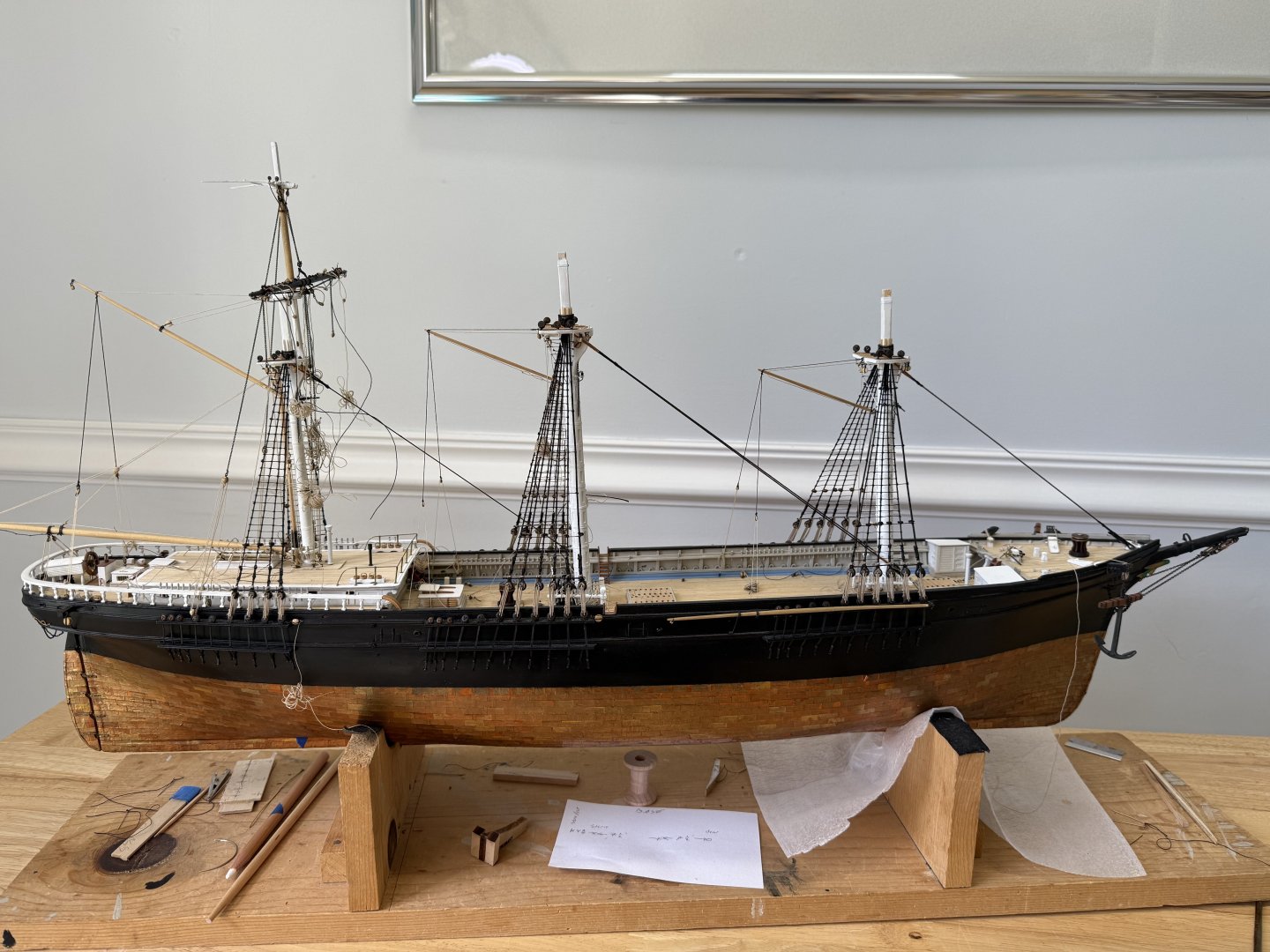
Rick310
NRG Member-
Posts
827 -
Joined
-
Last visited
Content Type
Profiles
Forums
Gallery
Events
Everything posted by Rick310
-
USS Constitution by mtbediz - 1:76
Rick310 replied to mtbediz's topic in - Build logs for subjects built 1751 - 1800
Very nice!! Rick -
Thanks Rob, yours look great! Will you do the same on Staghound? Rick
- 359 replies
-
- Flying Fish
- Model Shipways
-
(and 1 more)
Tagged with:
-
Rob, look on page 6 , April to May 2024. I attempted to describe with pictures, the pictures, the process. Rick
- 359 replies
-
- Flying Fish
- Model Shipways
-
(and 1 more)
Tagged with:
-
Wonderful job Jared!!! Congratulations on a job well done!! Very nice to see the quarter boats mounted on their davits, I intend to do the same . Now I have a much better idea of what they will look like! Both you and George are to be commended for finishing the build! The pressure is definitely on me now to also finish!! Rick
- 431 replies
-
- Flying Fish
- Model Shipways
-
(and 2 more)
Tagged with:
-
Jared, Peter and Rob, thanks for your kind words and encouragement!! I have certainly taken encouragement and have learned much from your builds!! Your models are beautiful and this has inspired me to try and meet the high standards you have set. Rick
- 359 replies
-
- Flying Fish
- Model Shipways
-
(and 1 more)
Tagged with:
-
Well, as the end of summer approaches, work on the FF has progressed. I finally rigged the mizzen Spencer and spanker booms. Ran into a problem with the run of the peak halyard as the mizzen top prevents a direct run to the appropriate belaying pin. This necessitated belaying the halyard 8 pins aft. I checked the measurements of the top and they were spot on. I also moved the throat halyard aft to be symmetrical with the peak halyard. The topping lifts were belayed to the spider band, while the spanker sheets were belayed to the mooring bits. I kind of made up the belaying on the bits as I not sure how this was done. Also added some rope coils. The topsail yard was added to the topmast and the topgallant shrouds installed and the topmast placed on the mizzenmast. The topsail yard chain halyards and the topgallant chain sheets were also rigged. The tails of the lanyards were finally secured to the last up leg as per the USS Constitution. Finally, the rat lines were installed on the lower shrouds.
- 359 replies
-
- Flying Fish
- Model Shipways
-
(and 1 more)
Tagged with:
-
Well done!!! looks great!! I will miss reading your updates!! Rick
- 431 replies
-
- Flying Fish
- Model Shipways
-
(and 2 more)
Tagged with:
-
Jared, congratulations!! FF looks great!! Well done!! A remarkable achievement, I can only hope to get there someday! Rick
- 431 replies
-
- Flying Fish
- Model Shipways
-
(and 2 more)
Tagged with:
-
George, congratulations on your new job! Good luck!! Had to laugh when I saw the picture, as I have been on board her! The Mather! Lived outside of Cleveland for 36 years, in Mentor, lake county, before moving to Maine full time in December, 2019! My daughter and her husband still live there. Would love to meet you next time we are in town! Rick
-
Keith, another fun build!! She looks great!! Rick
- 457 replies
-
- sternwheeler
- Hard Coal Navy
-
(and 1 more)
Tagged with:
-
Totally agree Rob. Jared, we all make aesthetic decisions based on what we know and what we think looks good/ correct. I will choose to mount the booms in their irons, the traditional way to display them. Not right or wrong, just personal preference. The model looks great!!! Rick
- 431 replies
-
- Flying Fish
- Model Shipways
-
(and 2 more)
Tagged with:
-
Nice job on the bell and binnacle, look’s really good! your Flying Cloud is coming along nicely!! Check the lengths of your chai plates, in the picture they look a bit long. Rick
- 200 replies
-
- Flying Cloud
- Mamoli
-
(and 1 more)
Tagged with:
About us
Modelshipworld - Advancing Ship Modeling through Research
SSL Secured
Your security is important for us so this Website is SSL-Secured
NRG Mailing Address
Nautical Research Guild
237 South Lincoln Street
Westmont IL, 60559-1917
Model Ship World ® and the MSW logo are Registered Trademarks, and belong to the Nautical Research Guild (United States Patent and Trademark Office: No. 6,929,264 & No. 6,929,274, registered Dec. 20, 2022)
Helpful Links
About the NRG
If you enjoy building ship models that are historically accurate as well as beautiful, then The Nautical Research Guild (NRG) is just right for you.
The Guild is a non-profit educational organization whose mission is to “Advance Ship Modeling Through Research”. We provide support to our members in their efforts to raise the quality of their model ships.
The Nautical Research Guild has published our world-renowned quarterly magazine, The Nautical Research Journal, since 1955. The pages of the Journal are full of articles by accomplished ship modelers who show you how they create those exquisite details on their models, and by maritime historians who show you the correct details to build. The Journal is available in both print and digital editions. Go to the NRG web site (www.thenrg.org) to download a complimentary digital copy of the Journal. The NRG also publishes plan sets, books and compilations of back issues of the Journal and the former Ships in Scale and Model Ship Builder magazines.



